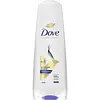What's inside
What's inside
 Key Ingredients
Key Ingredients

 Benefits
Benefits

 Concerns
Concerns

 Ingredients Side-by-side
Ingredients Side-by-side

Water
Skin ConditioningCetearyl Alcohol
EmollientBehentrimonium Chloride
PreservativeElaeis Guineensis Oil
EmollientCetyl Alcohol
EmollientIsopropyl Alcohol
SolventPhenoxyethanol
PreservativeStearamidopropyl Dimethylamine
EmulsifyingOctyldodecanol
EmollientSodium PCA
HumectantParfum
MaskingCitric Acid
BufferingSodium Cocoyl Amino Acids
CleansingChlorhexidine Dihydrochloride
AntimicrobialStearyl Alcohol
EmollientMyristyl Alcohol
EmollientPotassium Dimethicone PEG-7 Panthenyl Phosphate
Skin ConditioningSodium Sarcosinate
Propylene Glycol
HumectantArgania Spinosa Kernel Oil
EmollientArginine
MaskingHydrolyzed Soy Protein
HumectantHydrolyzed Vegetable Protein Pg-Propyl Silanetriol
Skin ConditioningSodium Chloride
MaskingTetrasodium EDTA
Potassium Sorbate
PreservativeWater, Cetearyl Alcohol, Behentrimonium Chloride, Elaeis Guineensis Oil, Cetyl Alcohol, Isopropyl Alcohol, Phenoxyethanol, Stearamidopropyl Dimethylamine, Octyldodecanol, Sodium PCA, Parfum, Citric Acid, Sodium Cocoyl Amino Acids, Chlorhexidine Dihydrochloride, Stearyl Alcohol, Myristyl Alcohol, Potassium Dimethicone PEG-7 Panthenyl Phosphate, Sodium Sarcosinate, Propylene Glycol, Argania Spinosa Kernel Oil, Arginine, Hydrolyzed Soy Protein, Hydrolyzed Vegetable Protein Pg-Propyl Silanetriol, Sodium Chloride, Tetrasodium EDTA, Potassium Sorbate
Water
Skin ConditioningCetearyl Alcohol
EmollientStearamidopropyl Dimethylamine
EmulsifyingDimethiconol/Silsesquioxane Copolymer
Skin ConditioningBehentrimonium Chloride
PreservativeIsohexadecane
EmollientParfum
MaskingLactic Acid
BufferingDipropylene Glycol
Humectant1,2-Hexanediol
Skin ConditioningBenzyl Alcohol
PerfumingSodium Chloride
MaskingDisodium EDTA
Glycerin
HumectantGluconolactone
Skin ConditioningTrehalose
HumectantTrideceth-6
EmulsifyingCetrimonium Chloride
AntimicrobialSodium Sulfate
Alpha-Isomethyl Ionone
PerfumingHexyl Cinnamal
PerfumingHydroxycitronellal
PerfumingLinalool
PerfumingWater, Cetearyl Alcohol, Stearamidopropyl Dimethylamine, Dimethiconol/Silsesquioxane Copolymer, Behentrimonium Chloride, Isohexadecane, Parfum, Lactic Acid, Dipropylene Glycol, 1,2-Hexanediol, Benzyl Alcohol, Sodium Chloride, Disodium EDTA, Glycerin, Gluconolactone, Trehalose, Trideceth-6, Cetrimonium Chloride, Sodium Sulfate, Alpha-Isomethyl Ionone, Hexyl Cinnamal, Hydroxycitronellal, Linalool
 Reviews
Reviews

Ingredients Explained
These ingredients are found in both products.
Ingredients higher up in an ingredient list are typically present in a larger amount.
This ingredient is a preservative and often used for it's anti-static properties. You'll most likely see this ingredient in hair conditioners.
It does not cause irritation or sensitization in leave-on products at 1-5%.
Cetearyl alcohol is a mixture of two fatty alcohols: cetyl alcohol and stearyl alcohol. It is mainly used as an emulsifier. Emulsifiers help prevent the separation of oils and products. Due to its composition, it can also be used to thicken a product or help create foam.
Cetearyl alcohol is an emollient. Emollients help soothe and hydrate the skin by trapping moisture.
Studies show Cetearyl alcohol is non-toxic and non-irritating. The FDA allows products labeled "alcohol-free" to have fatty alcohols.
This ingredient is usually derived from plant oils such as palm, vegetable, or coconut oils. There is debate on whether this ingredient will cause acne.
Due to the fatty acid base, this ingredient may not be Malassezia folliculitis safe.
Learn more about Cetearyl AlcoholParfum is a catch-all term for an ingredient or more that is used to give a scent to products.
Also called "fragrance", this ingredient can be a blend of hundreds of chemicals or plant oils. This means every product with "fragrance" or "parfum" in the ingredients list is a different mixture.
For instance, Habanolide is a proprietary trade name for a specific aroma chemical. When used as a fragrance ingredient in cosmetics, most aroma chemicals fall under the broad labeling category of “FRAGRANCE” or “PARFUM” according to EU and US regulations.
The term 'parfum' or 'fragrance' is not regulated in many countries. In many cases, it is up to the brand to define this term.
For instance, many brands choose to label themselves as "fragrance-free" because they are not using synthetic fragrances. However, their products may still contain ingredients such as essential oils that are considered a fragrance by INCI standards.
One example is Calendula flower extract. Calendula is an essential oil that still imparts a scent or 'fragrance'.
Depending on the blend, the ingredients in the mixture can cause allergies and sensitivities on the skin. Some ingredients that are known EU allergens include linalool and citronellol.
Parfum can also be used to mask or cover an unpleasant scent.
The bottom line is: not all fragrances/parfum/ingredients are created equally. If you are worried about fragrances, we recommend taking a closer look at an ingredient. And of course, we always recommend speaking with a professional.
Learn more about ParfumChances are, you eat sodium chloride every day. Sodium Chloride is also known as table salt.
This ingredient has many purposes in skincare: thickener, emulsifier, and exfoliator.
You'll most likely find this ingredient in cleansers where it is used to create a gel-like texture. As an emulsifier, it also prevents ingredients from separating.
There is much debate on whether this ingredient is comedogenic. The short answer - comedogenic ratings don't tell the whole story. Learn more about comegodenic ratings here.
The concensus about this ingredient causing acne seems to be divided. Research is needed to understand if this ingredient does cause acne.
Scrubs may use salt as the primary exfoliating ingredient.
Learn more about Sodium ChlorideWe don't have a description for Stearamidopropyl Dimethylamine yet.
Water. It's the most common cosmetic ingredient of all. You'll usually see it at the top of ingredient lists, meaning that it makes up the largest part of the product.
So why is it so popular? Water most often acts as a solvent - this means that it helps dissolve other ingredients into the formulation.
You'll also recognize water as that liquid we all need to stay alive. If you see this, drink a glass of water. Stay hydrated!
Learn more about Water